
If you wish to understand yourself,
seek yourself in the wideness of the world;
if you wish to understand the world,
seek in the depths of your own mind.
Rudolf Steiner
Light ether: relationships with the environment
Attitude
Light or light ether allows you to see objects and their environment. The light brings them out of the darkness and allows you to see the circumstances surrounding an object at a particular point in time. Light ether reveals the relationships within the spatial appearance; this is known as the 'context of phenomena'.
Light ether is characterised by delineation and the creation of space; linearity and attraction; and polarisation.
- Delineation and the creation of space: on the one hand, light ether spatially defines an object; on the other hand, it creates a lighted space surrounding the object. Although the object's environment is theoretically infinite, it is limited by the distance across which the light can penetrate. You will have to define a relevant boundary, to decide what to include and what not.
- Linearity and attraction: these imply that the object grows towards the light and is attracted from the cosmos.
- Polarisation: you observe in terms of polarities, like light and dark, with twilight in between. This can be extended to all other factors that involve two poles and a gradient. Which factors are involved depends on the object. In the case of a plant or a landscape these may be physical polarities such as acid – alkaline, dry – wet, sand – clay, nutrient-rich – nutrient-poor, young – old or vegetative – generative.
Generally speaking, light ether as a mode of observation means that you observe the present cohesion in the object's environment and how its influences the object. You examine how the proportions in the object's environment have shaped the object and are expressed in the object.
Thinking allows you to experience the cohesion within the object's present appearance (which may consist of many individual observations) and to develop it into a mental image. It is this image that represents the 'context of phenomena'.
Aspects you can study include the following:
- The environmental factors and their polarities and gradients, that is, the transitions between light and dark, acid and alkaline, dry and wet, etc. You can situate the object along these gradients. An object's environment is assumed to consist of a number of factors. Examples of environmental factors include soil, water, climate, etc., and the soil in turn includes factors like soil type, nutrient content, pH, etc. All of these factors affect the object in some coherent way.
- What unifies the appearance, that is, how the object and its environment are one and how the object reflects its environment. A common oak is always a unified whole, but will differ in different environments. It reflects its environment, in a relationship that you can examine by looking at both the oak and its environment. You can also think of the relationship between the behaviour of a herd of cattle and the design of their shed.
- The orientation in terms of compass directions. You can see that the north side of a tree has a different shape and colour than the south side, and has different plants growing underneath it, since the circumstances differ.
You can concentrate on an object's environment as a characteristic mental image. You can ask yourself what characterises the environment or its various parts, and try to understand the object from that perspective.
Light ether and the 'context of phenomena' correspond to the power of imagination, that is, the ability to form a mental image by thinking.
Examples
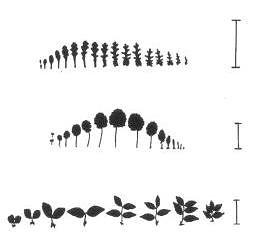
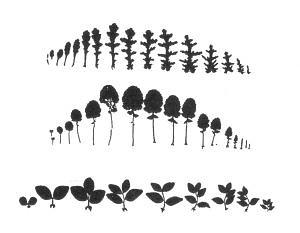
Leaf series from ragwort, rape and broad bean grown on a sandy–loamy soil and on a compost-fertilised soil
Plant shapes and soils
The figure shows the relation between the soil and the leaf shapes of a number of plants. The leaves in the top row, which are smaller and more acutely shaped, are from plants growing on an unfertilised, sandy–loamy soil. Those in the bottom row are larger and have more rounded shapes; they come from plants growing on a soil fertilised with compost. These leaves reflect the quality of their environment. The acute shapes reflect the nutrient-poor sand, while the round shapes reflect the nutrient-rich compost.
Plant shapes and light
- A plant growing in bright daylight is bright green and has flowers with bright colours; its shape is differentiated, its leaves have acute shapes.
- A plant growing in the shade has a dull, dark green colour; its flowers have pale colours and there is a musty smell.
- A plant growing in the dark looks pale and its shapes are undifferentiated (Bockemühl, 1985).
Other environmental factors, like water and pH, have other effects.
In the forest
A wooded hillside facing south is moist, bright and warm. This is reflected in the image of the full, round, vigorous, bright red flowers of the peony that emerge from the lush green of the bush. By contrast, the pale green flowers of the stinking hellebore, which flowers in winter, reflect a bright situation in a cool, shady beech forest on dry soil (Bockemühl, 1985).

Light ether shows spatial relationships
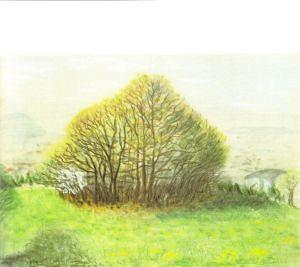
The coherence in the appearance of a bush; on each side we see different plants
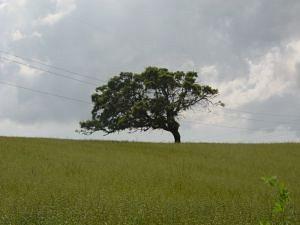
The wind gave this tree its asymmetrical form
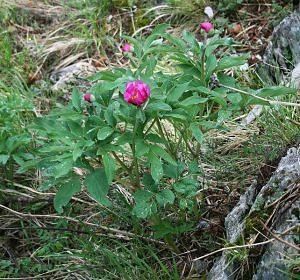
Peony
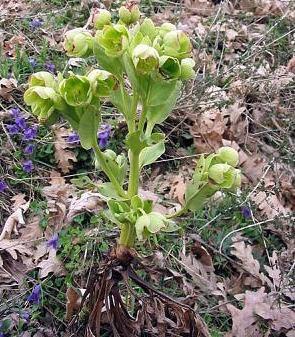
Stinking hellebore
Exercises
Relation between shapes of plants and heir environment
Study the shapes of a few plants, either the leaf shape or the shape of the plant as a whole. Describe their environment. Do the same in a different environment. How is the environment reflected in the plants? What relationships can you identify? In describing the leaves, you should also use the concepts of elongation, expansion, segmentation and narrowing which were discussed in the context of metamorphosis.
Polarities
Try to define relevant polarities of factors in an object's environment. Define and describe the poles, the gradient and the midway point, which may also have its own features. Determine where the object is situated along the gradients. Summarise this for all relevant polarities. Examine this for the object. Are the environmental factors reflected in the object?
Environment
Describe the environment of an object or a situation, in such a way that you can translate the description into an image. Then develop a mental image. What are the characteristics? Examine whether you can see the characteristics of the image of the environment reflected in the object.
